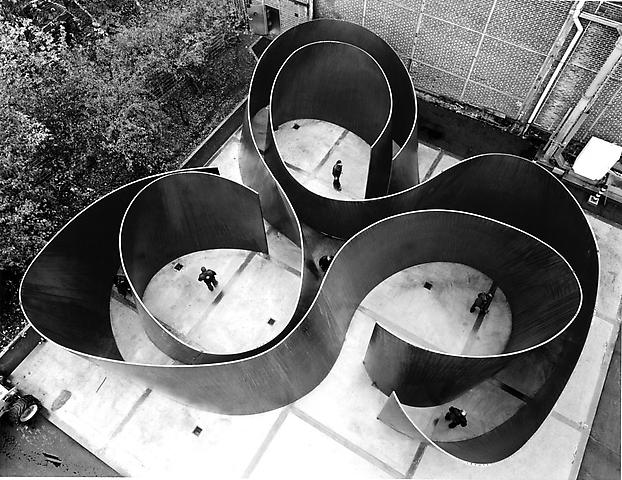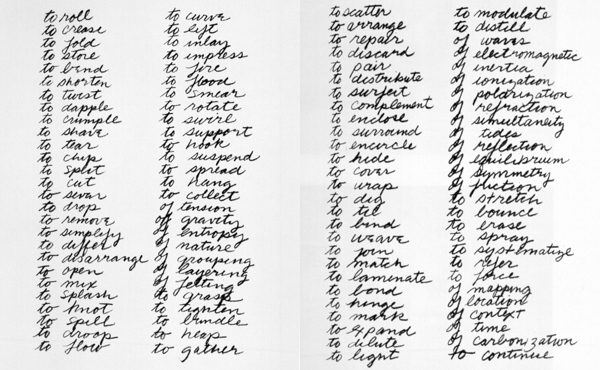Through massive, expressive and sturdy sculptures, Richard Serra shapes spaces and interacts with the audience via his sculptures’ physicality and mass.
American sculptor Richard Serra‘s work is all about space. Shaping it, twisting it, question it… Serra’s genius has been appreciated and exhibited worldwide, deeming him one of the most influential and celebrated artists of the 21st century. His minimalistic pieces are easily recognisable: no artist treats space with the same malleability as Serra does.
In 1981, Richard Serra was probably not New York’s mayor’s favourite person. Having installed a massive wall in the middle of Foley Square, Serra’s piece interrupted the flow of pedestrians across the square. It was a highly inconvenient piece of art, but it did precisely what Serra does so well; it made people conscious of how their bodies move through space and about physical and constructed barriers imposing on the freedom of movement.
It was also a game-changer regarding how people viewed, and spoke, about public art. Tilted Arc, as the piece was called, was not Serra using the site to define his work, but rather redefined the site with his art. After 8 years of court battles, the piece was eventually destroyed, which is quite symbolic in itself.

One of the most known pieces of Serra’s work is a permanent installation in the Guggenheim museum of Bilbao. It is, to this day, one the Guggenheim’s star artworks, always captivating visitors, if anything because of the sheer scale of the piece. Consisting of metal walls twisted and positioned in unexpected angles, The Matter of Time, 1994–2005 utilises the way our bodies perceive space to create sensations of vertigo, claustrophobia, openness and disorientation as the spectator makes their way through Serra’s work.
Interestingly, Serra’s early work was actually rather different than the pieces he is notoriously known for. He was part of a movement called Process Art, whose quality comes from an awareness of the process it took to make the art itself. During this time he produces Gutter Splashes, a piece which spiked his curiosity on physicality; depending on how he arranged his piece, it would force viewers to react to the space one way or another.
Another unexpected, but actually very useful and interesting piece of Serra is his verb list. Used as a reference in many creative disciplines, Serra’s verb list attests to the artist’s action-based approach to sculpture and form-making. As Richard Serra himself puts it, it’s all about “actions to relate to oneself, material, place, and process.”

The Verb List, exhibited at the MoMa, is part is Serra’s non-sculptural work, which is equally as impacting and impressive as the large-scale installations the artist makes. Through mark-making, Serra explores form and shapes in two dimensions. Black paintstick (compressed oil paint, wax, and pigment) as his preferred medium since 1971, Serra produces pieces with optical weight, very similar to the presence of his sculptural works.


